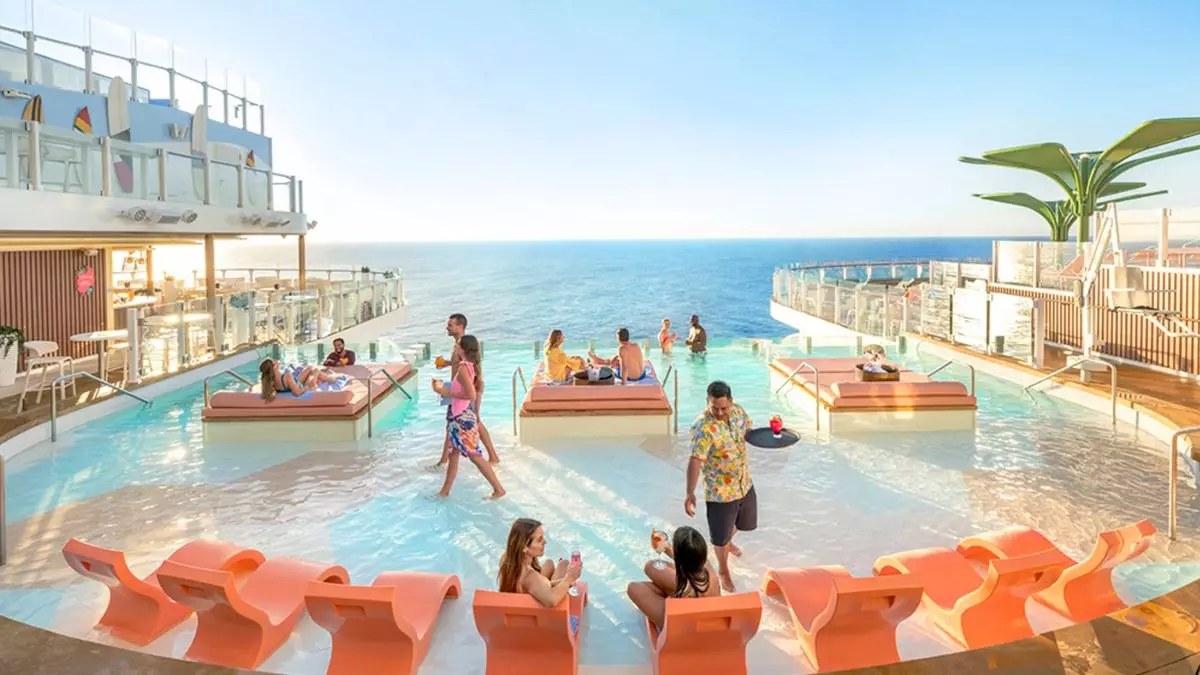The cruise industry, led by major players such as Carnival Corp., Norwegian Cruise Line Holdings, and Royal Caribbean Group, is experiencing a remarkable resurgence despite an overall slowdown in growth within the broader hospitality sector. Analysts like Robin Farley from UBS have pointed out that while hotels are struggling with lowered revenue per available room (RevPAR) and cooling growth in some markets, the cruise sector is thriving. This paradox raises essential questions about what sets the cruise industry apart from its hotel counterparts, particularly in times of economic uncertainty.
The key difference appears to lie in consumer perceptions and pricing structures. While hotel prices have surged significantly—up 20% for general U.S. accommodations and even higher for resorts and Caribbean destinations—cruise lines have managed to maintain a competitive edge by presenting an attractive value proposition. Farley’s analysis reveals that cruise net per diems have indeed risen, but at a slower pace compared to the rapid price hikes seen in the hotel sector. Therefore, the cruise industry may not only be surviving but thriving based on its inherent value compared to land-based vacations.
The Value Proposition of Cruising
A significant factor in the cruise industry’s buoyancy stems from the comprehensive pricing model it employs. Unlike traditional land vacations, which often come with hidden fees and unexpected expenses, cruises package various amenities—meals, entertainment, accommodations—all into a single upfront price. This transparency allows consumers to perceive cruises as an excellent deal, particularly in comparison to rising hotel rates.
The differential pricing strategy is crucial. Cruise lines need not be the lowest priced options available; they only need to offer a better relative value against hotels and resorts. Farley emphasizes that the cruise industry benefits from a wide price gap, providing opportunities for growth even if actual ticket prices increase. The industry’s resilience is further buoyed by its ability to vary its pricing tactics. For example, the growth in onboard revenue indicates that cruise companies are diversifying their income streams beyond just fare increases, catering to the evolving demands of travelers.
The surge in onboard revenue has emerged as a crucial element in the cruise industry’s capacity to expand profitability. As the sector has adjusted to post-pandemic realities, enhancements such as bundled packages and pre-purchased amenities have become increasingly popular. Farley notes that the three major cruise lines have demonstrated an increase in precruise onboard revenue, fueled by the introduction of exciting recreational opportunities and more diverse service offerings.
Royal Caribbean’s innovative private island, Perfect Day at Coco Cay, represents an example of strategic investment yielding results. Initially opened just months before the pandemic, its growth in utilization suggests a consumer appetite for immersive experiences, which can significantly contribute to onboard spending. Likewise, Carnival Corp. claims that a substantial share of its revenue now comes from pre-booked services, showcasing a changing consumer approach that relies less on impulse purchases and more on planned spending tailored to enhance their cruise experience.
Looking ahead, the cruise industry’s prospects seem promising, especially when considering the continued evolution of consumer behavior and travel preferences. With the current price dynamics favoring cruising, coupled with innovative marketing and an expanding range of onboard experiences, the potential for growth appears ripe.
Moreover, with airlines, hotels, and other travel sectors facing market uncertainties, cruises may position themselves as the more appealing all-in-one vacation solution. The industry’s ability to adapt and expand its offerings while maintaining a competitive edge in pricing will be essential for sustaining growth in a complex marketplace.
As the cruise sector continues on its upward trajectory, understanding these dynamics offers valuable insights into the industry’s future. The apparent gap between hotel pricing and cruise offerings signals a critical moment for cruise lines to harness their unique advantages and further capture consumer interest in the years to come.


Leave a Reply